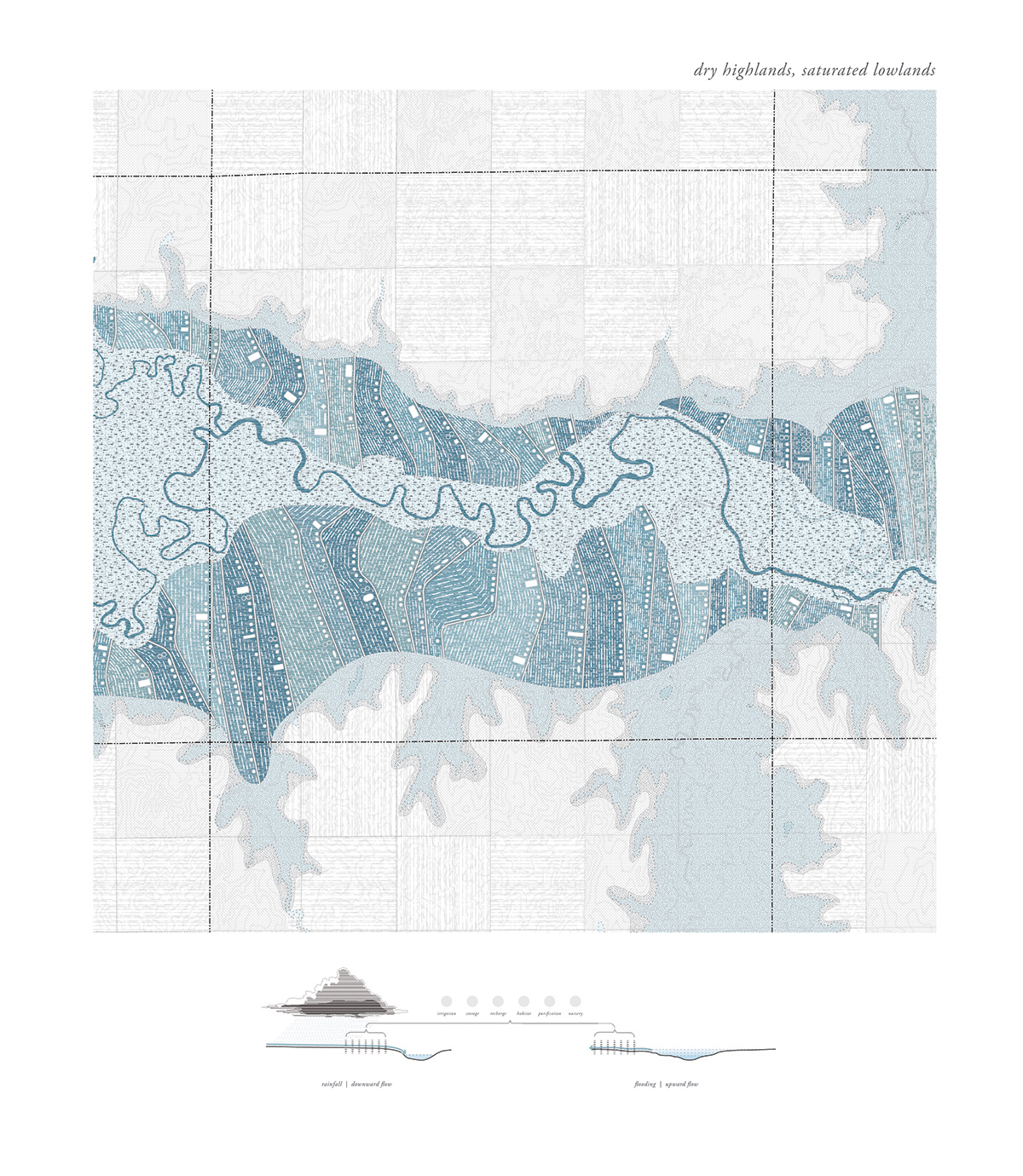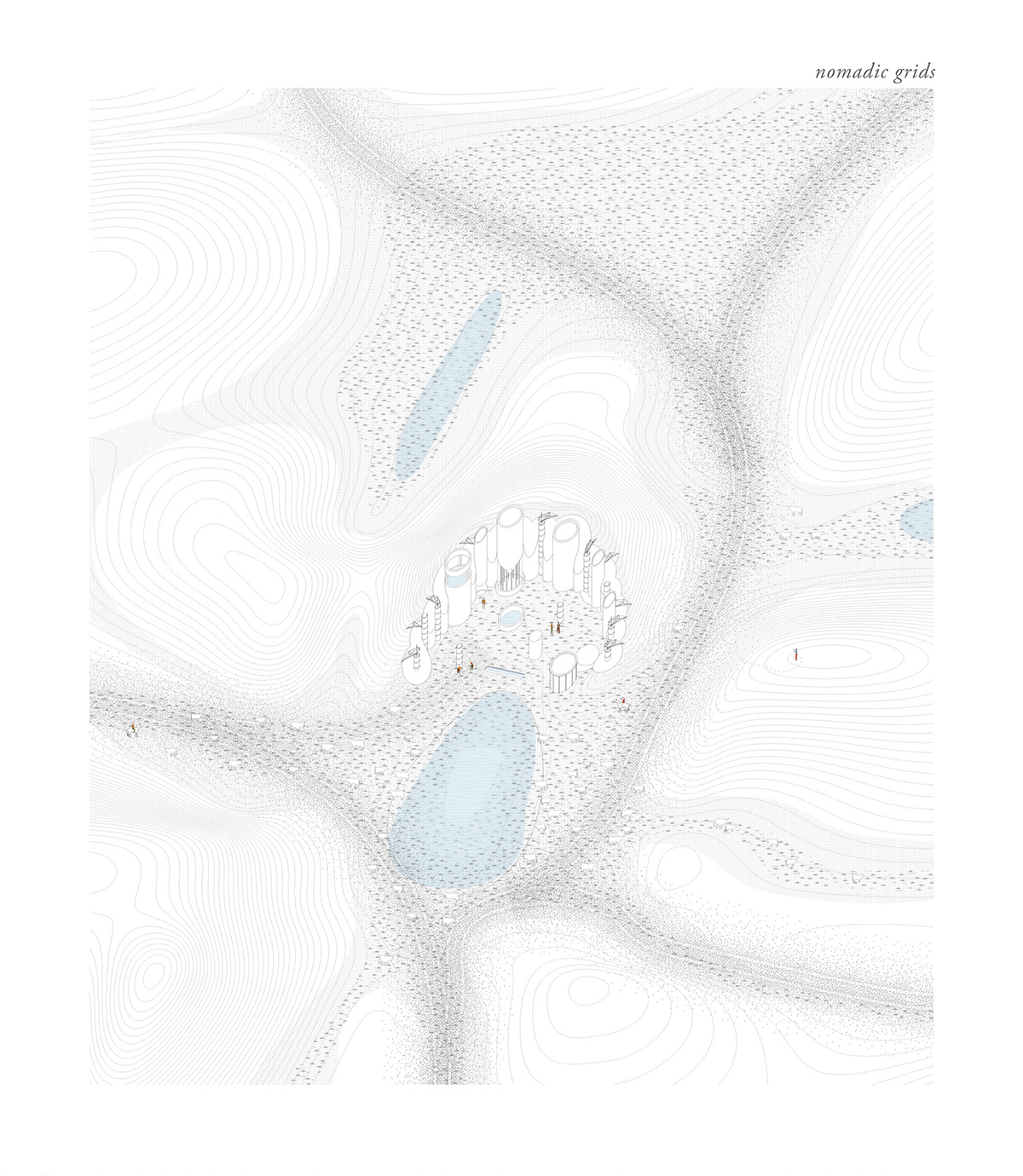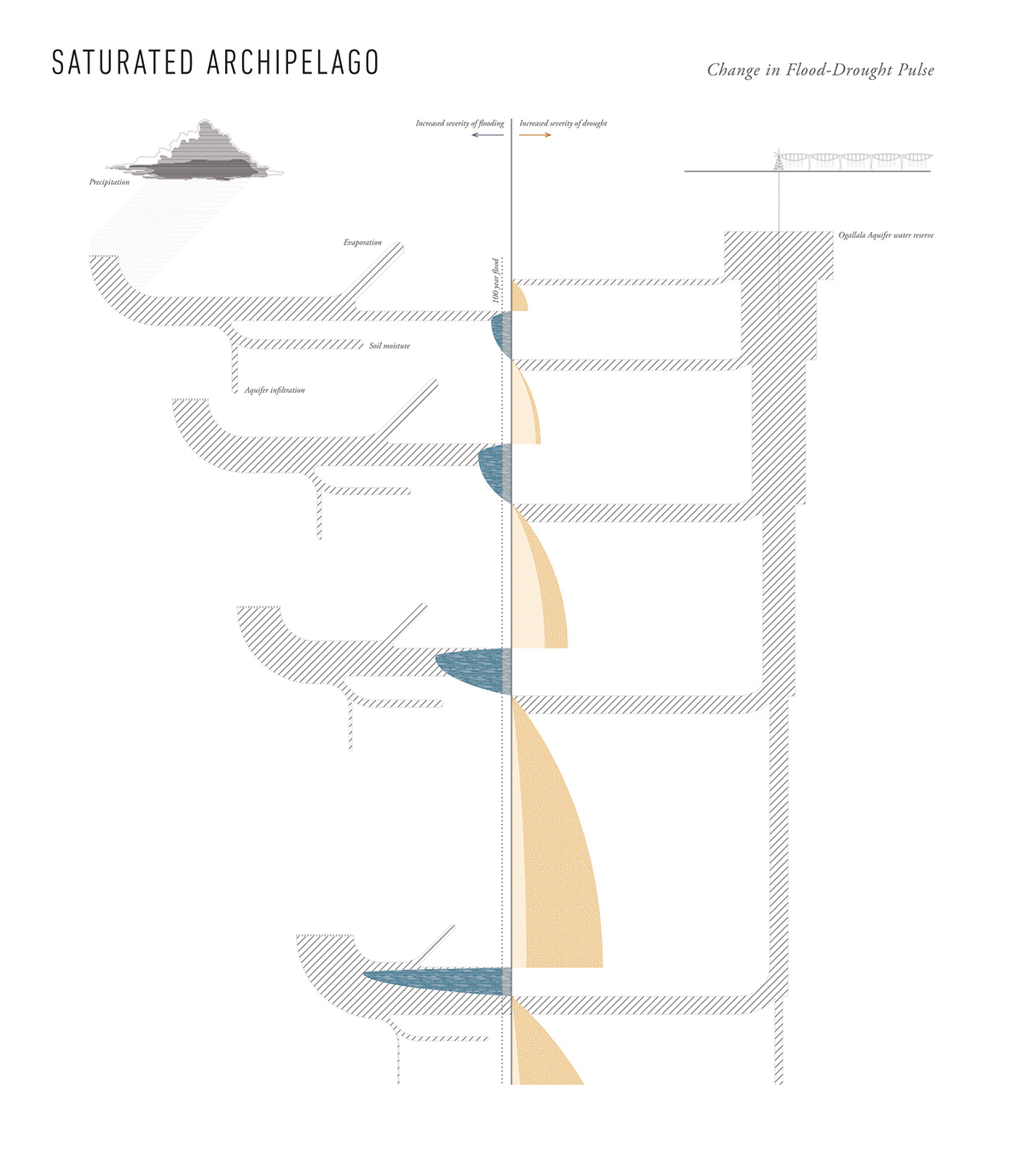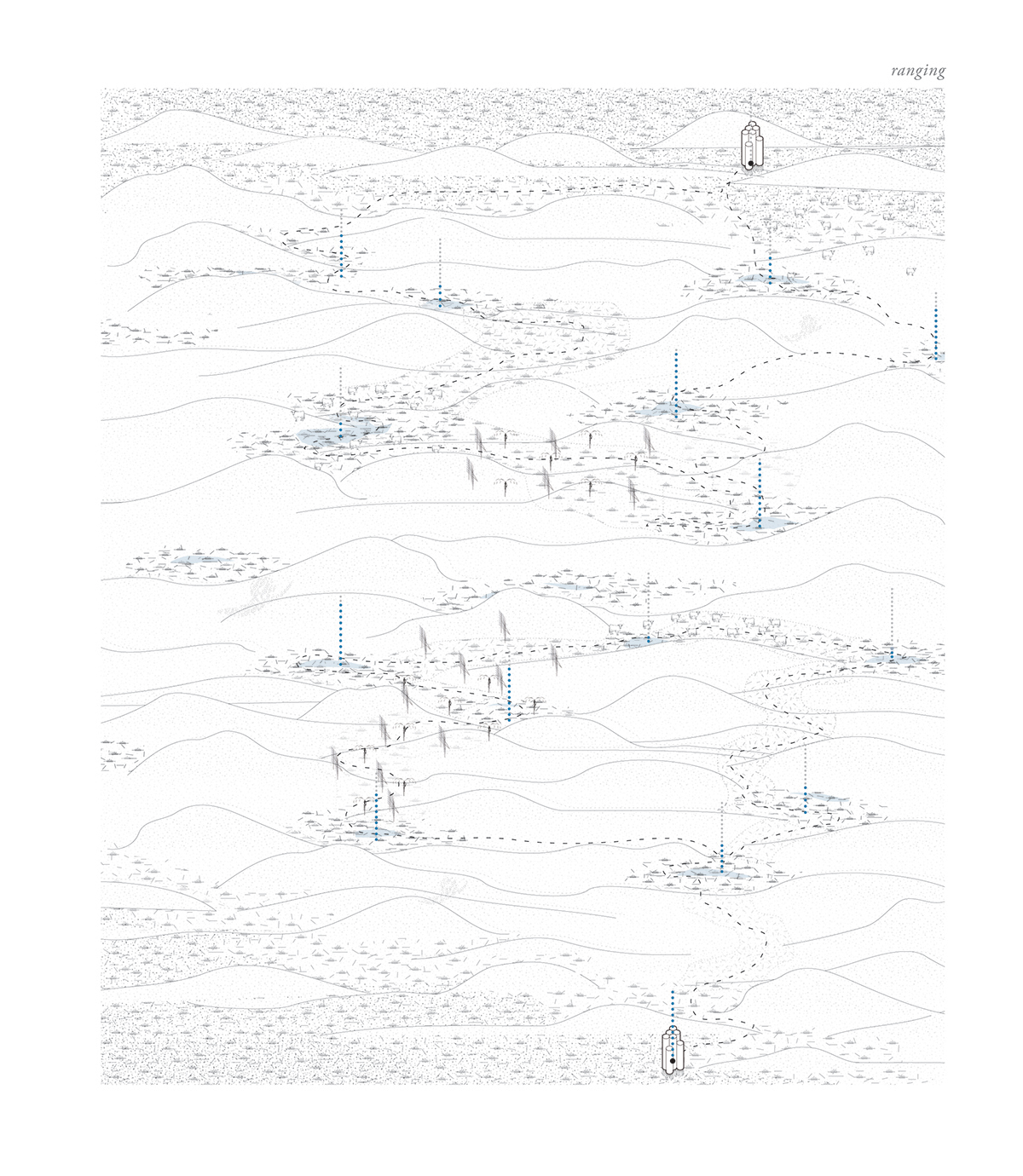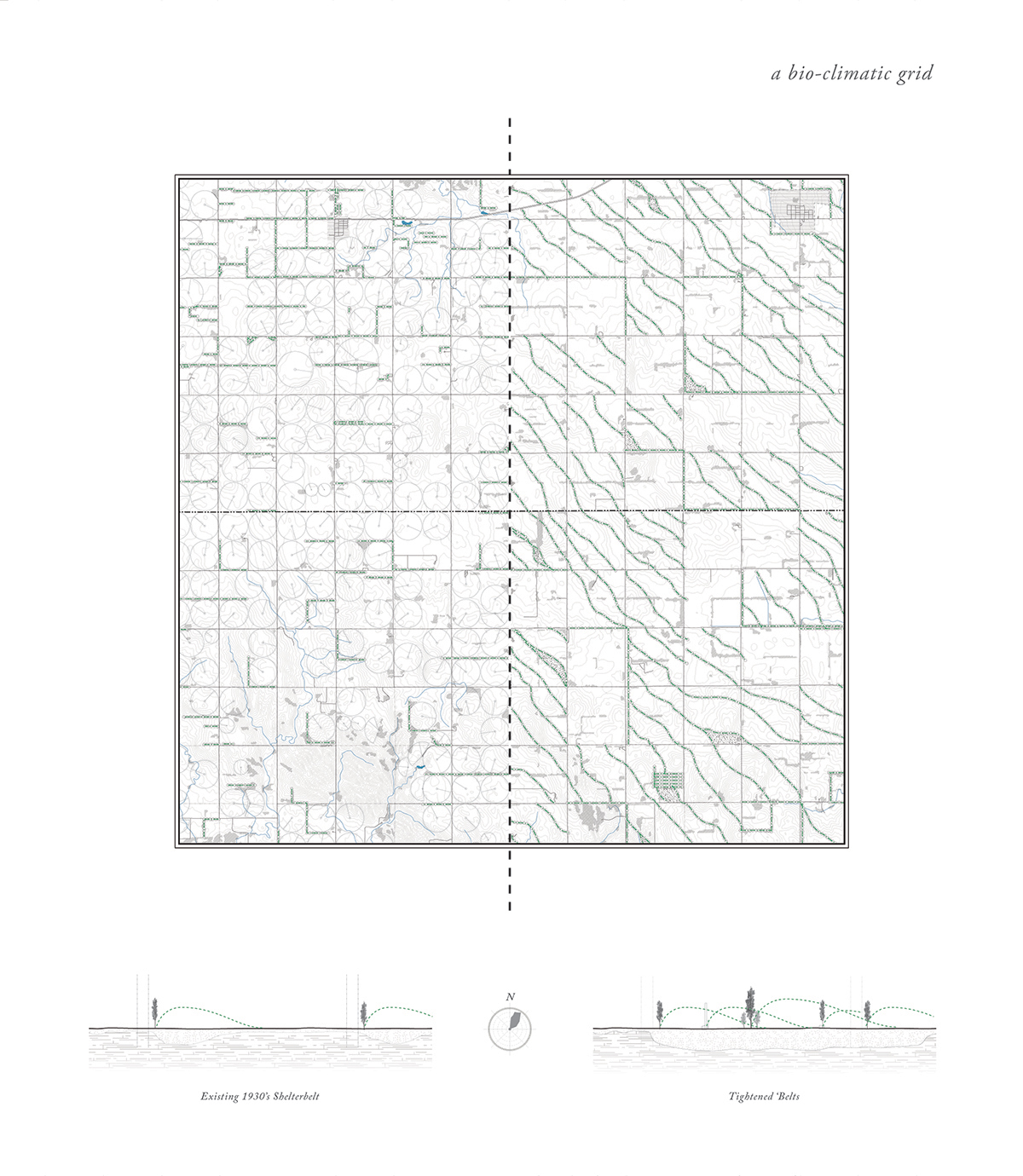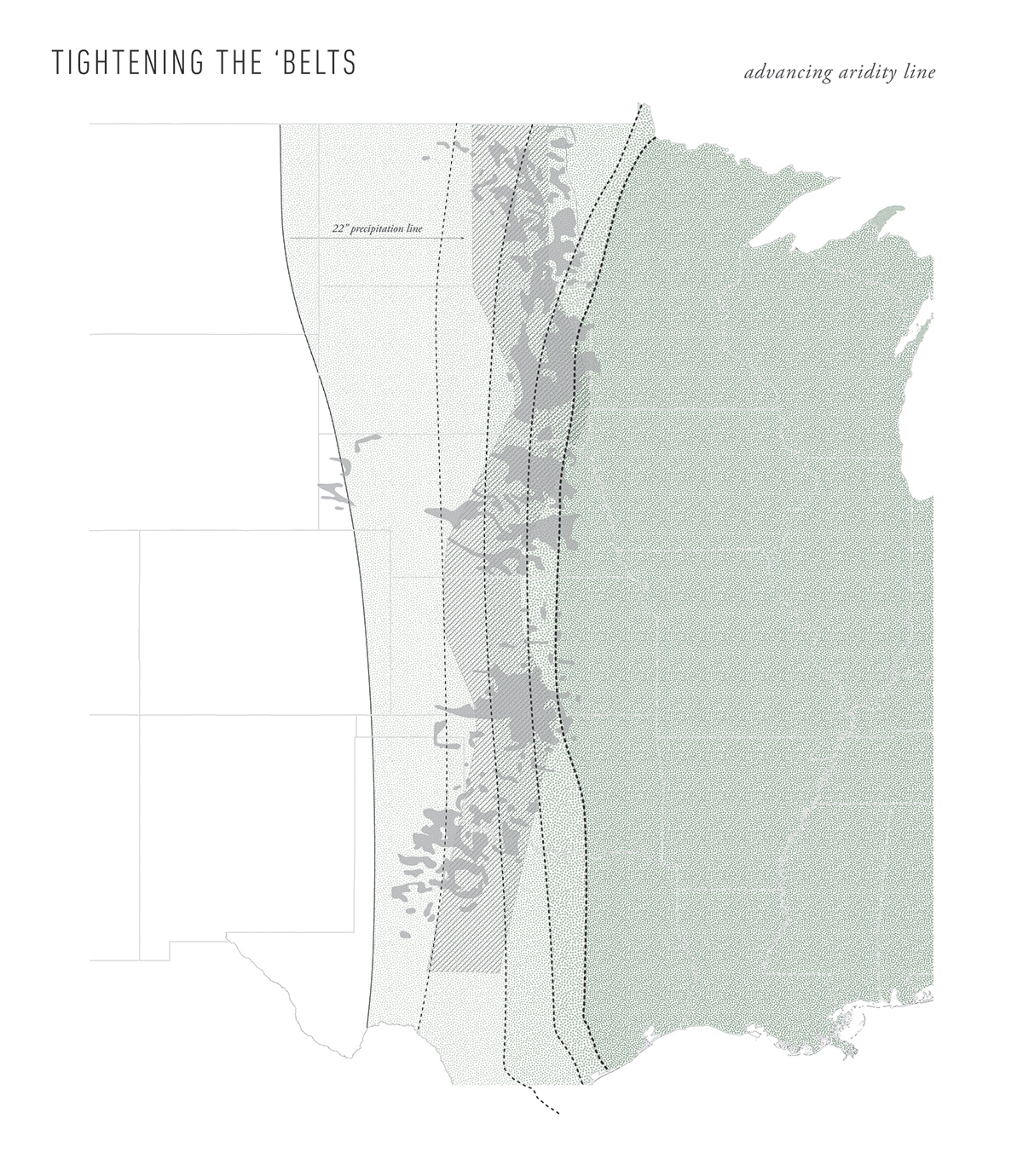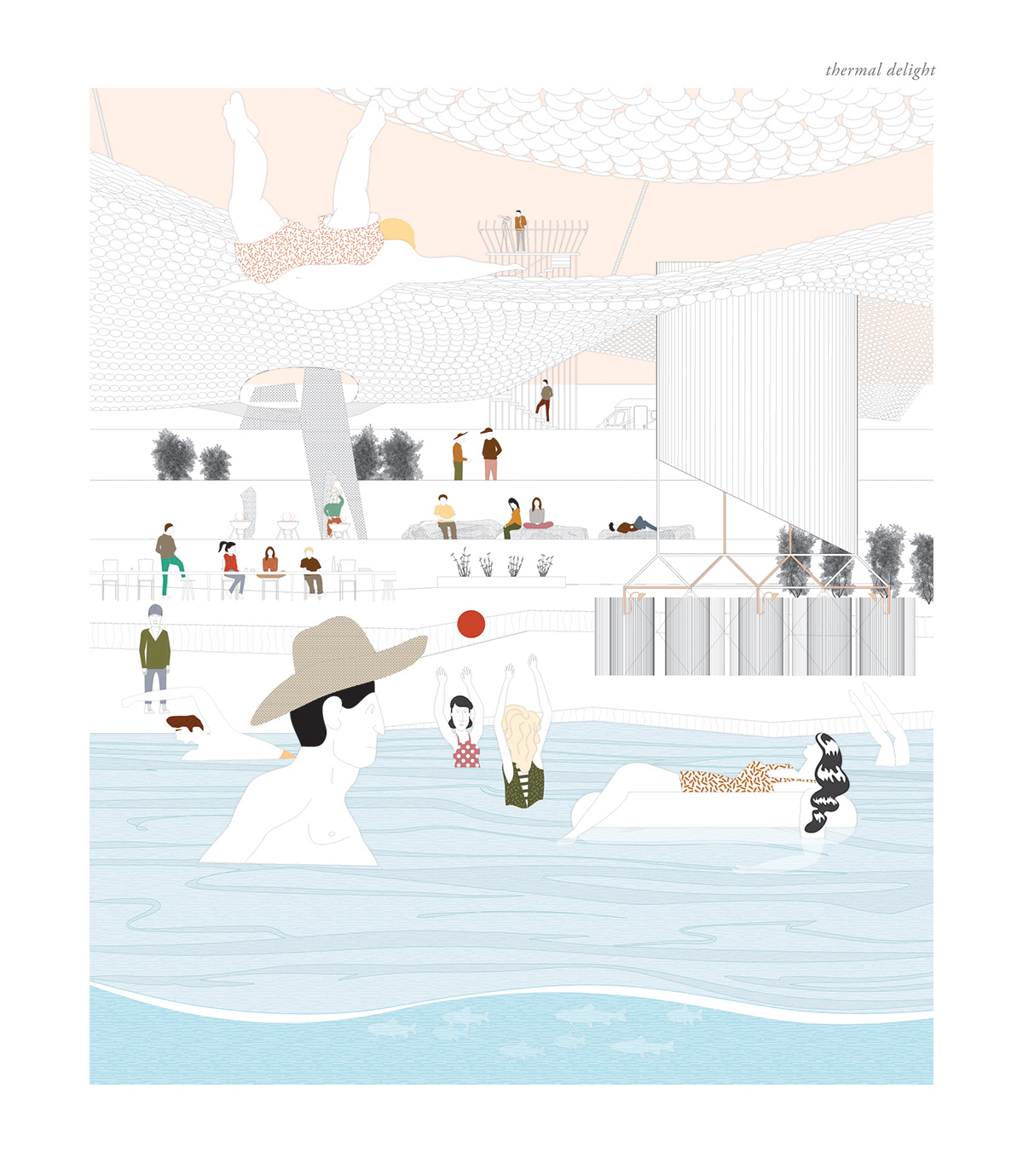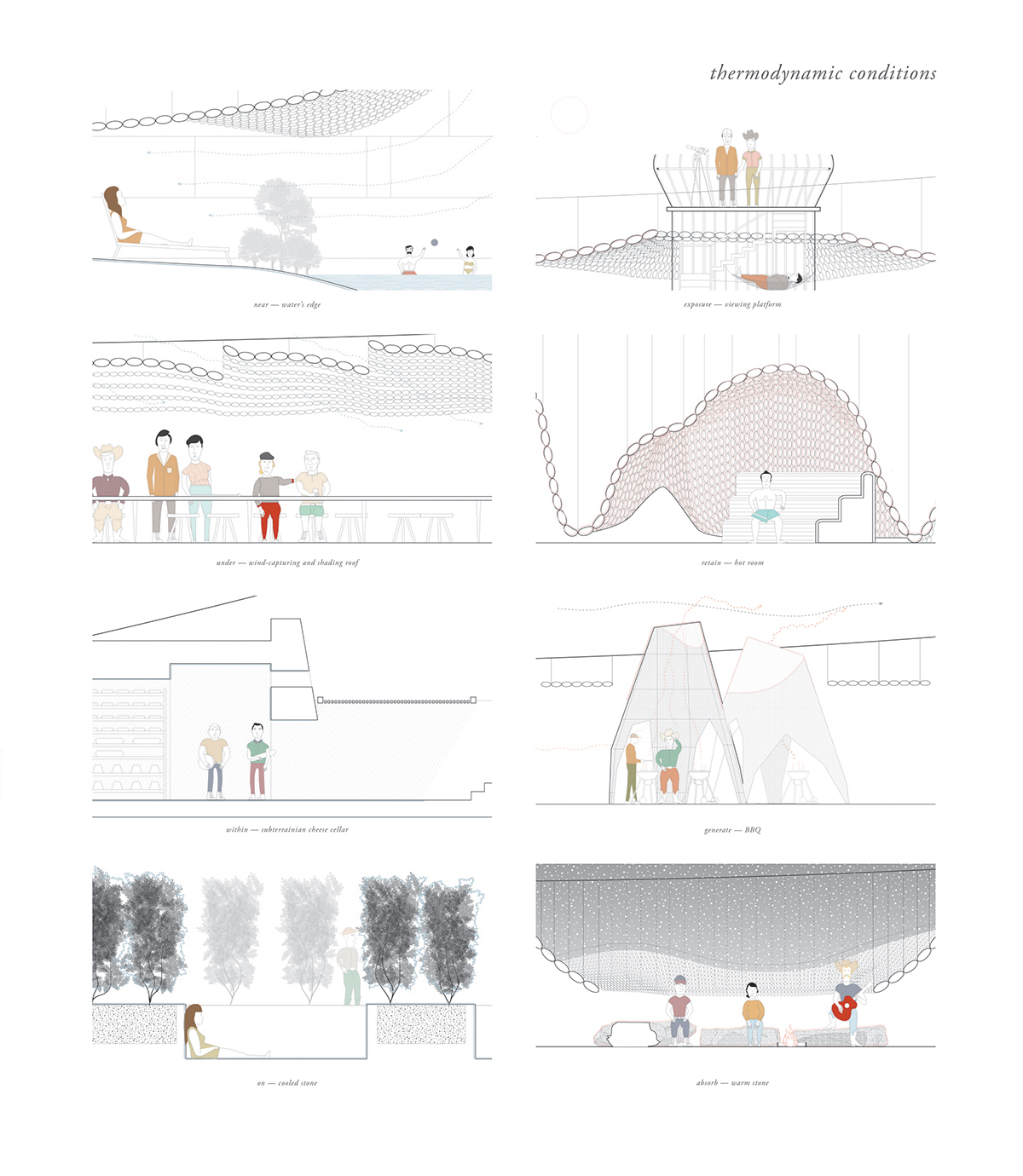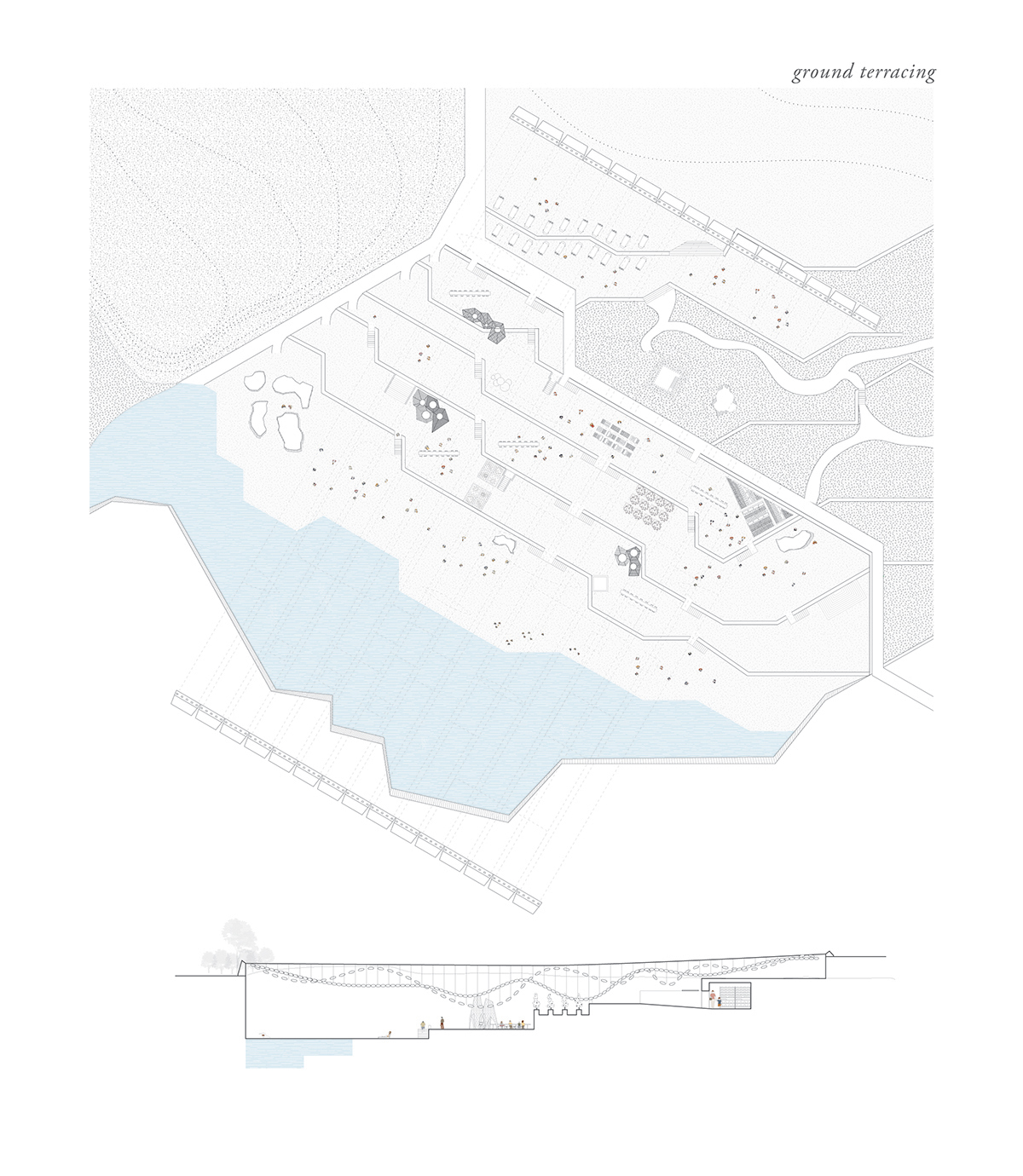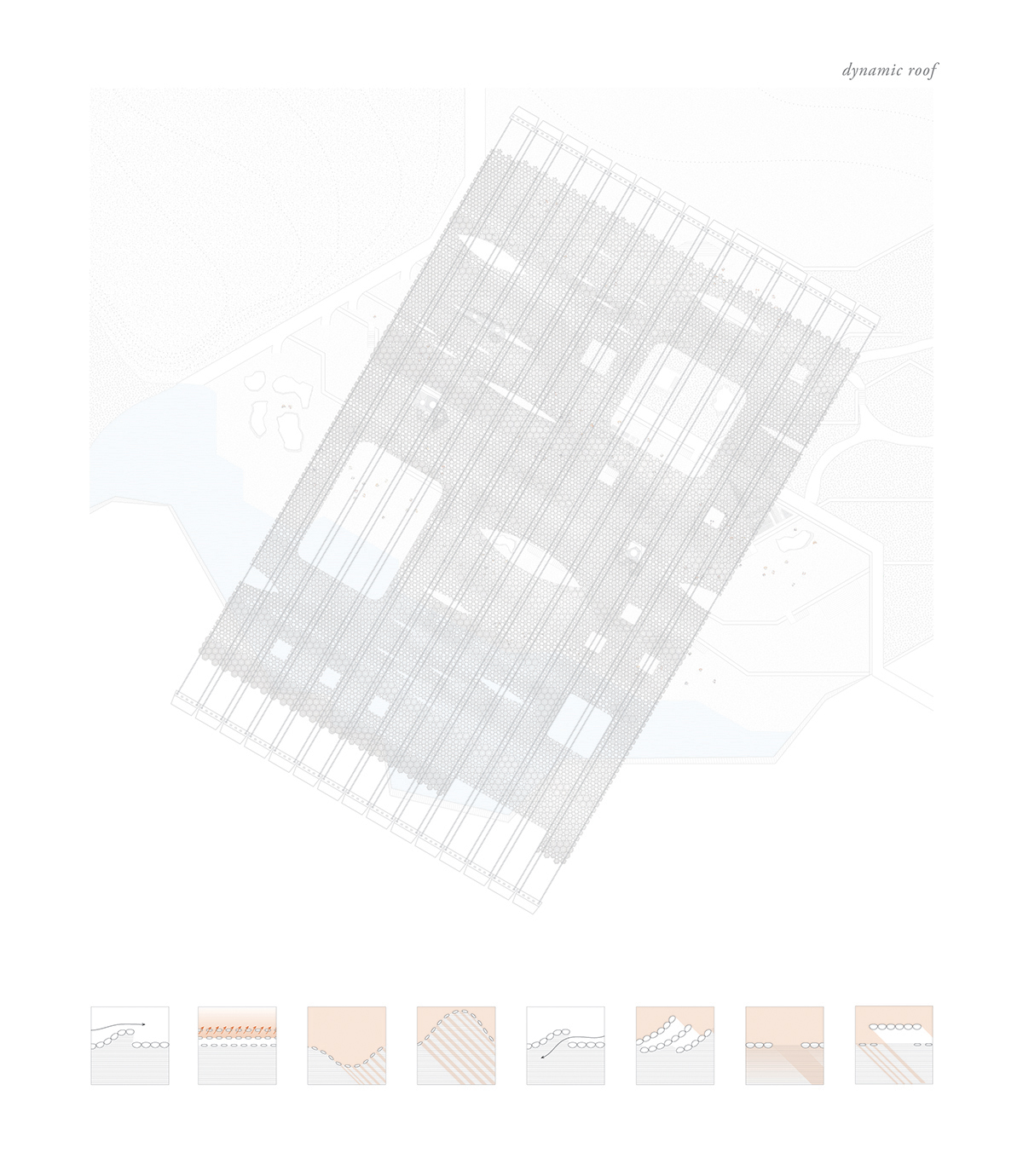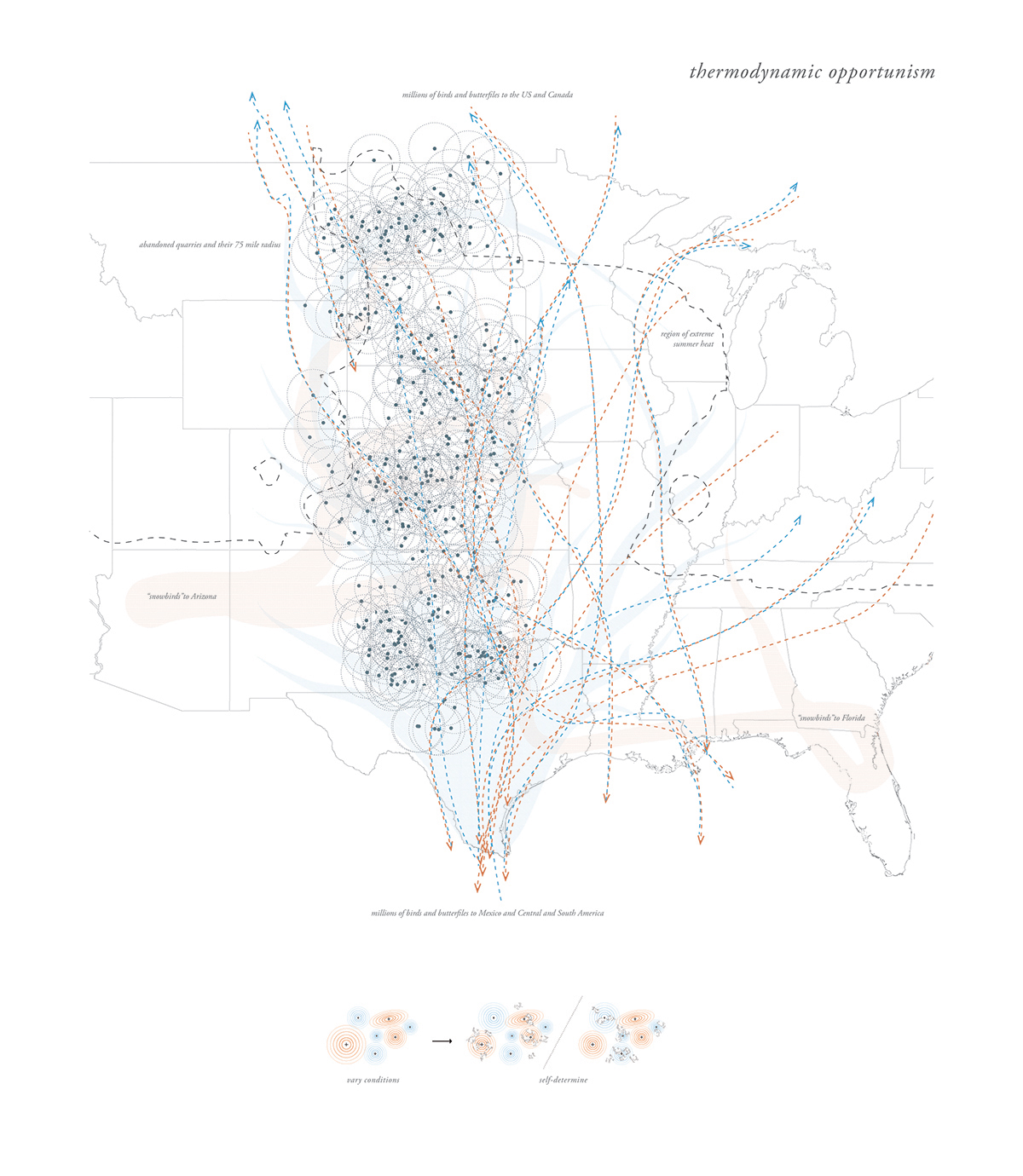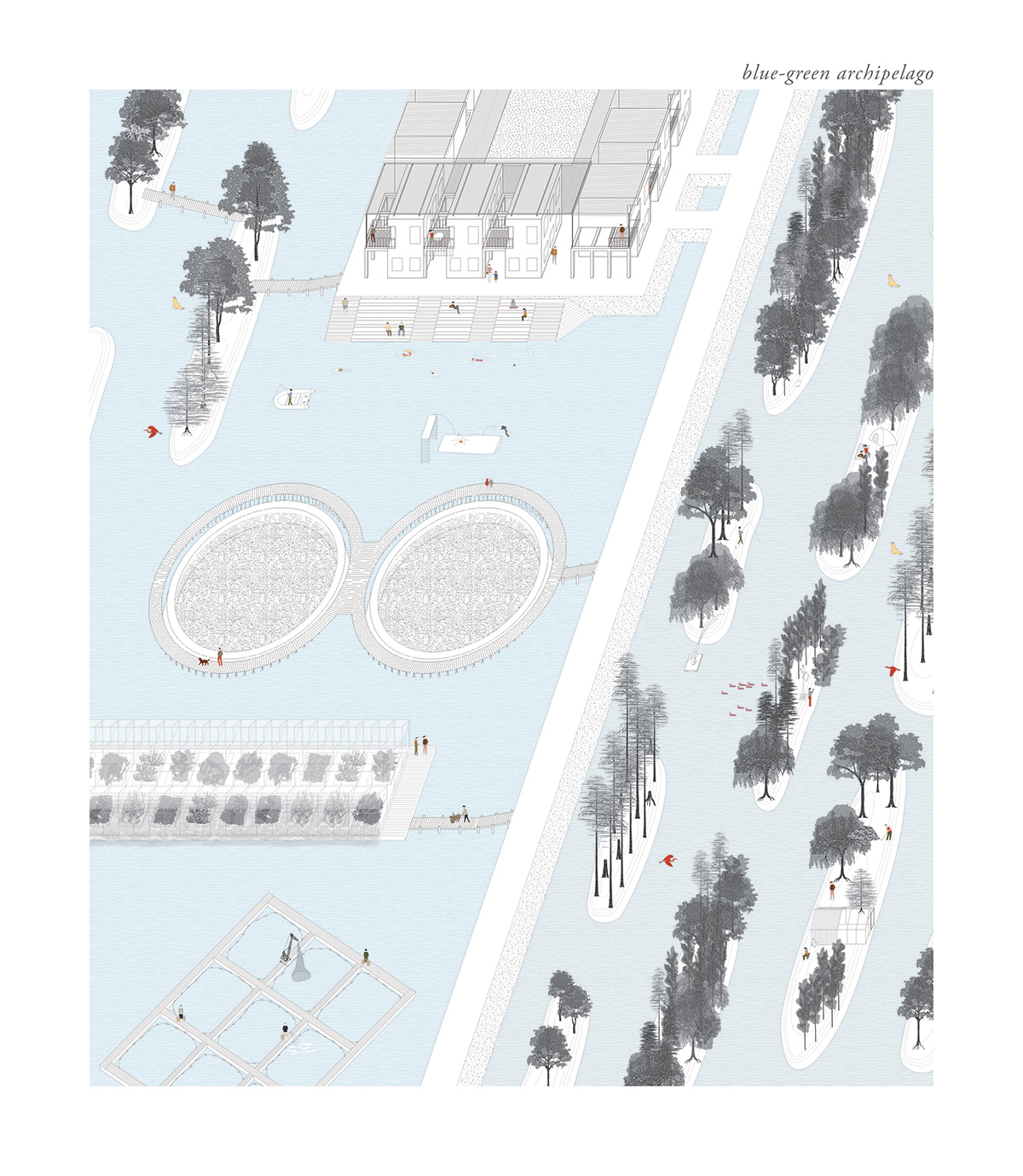Architecture After Cultivation: Four Grids for the Great Plains
Master of Architecture graduation project, UBS SALA, 2015-2016
Authors: Roy Cloutier and Nicole Sylvia
Advisors: John Bass and Blair Satterfield
Presented at the Association of Collegiate Schools of Architecture Annual Meeting, 2017.
Full document available via this link.
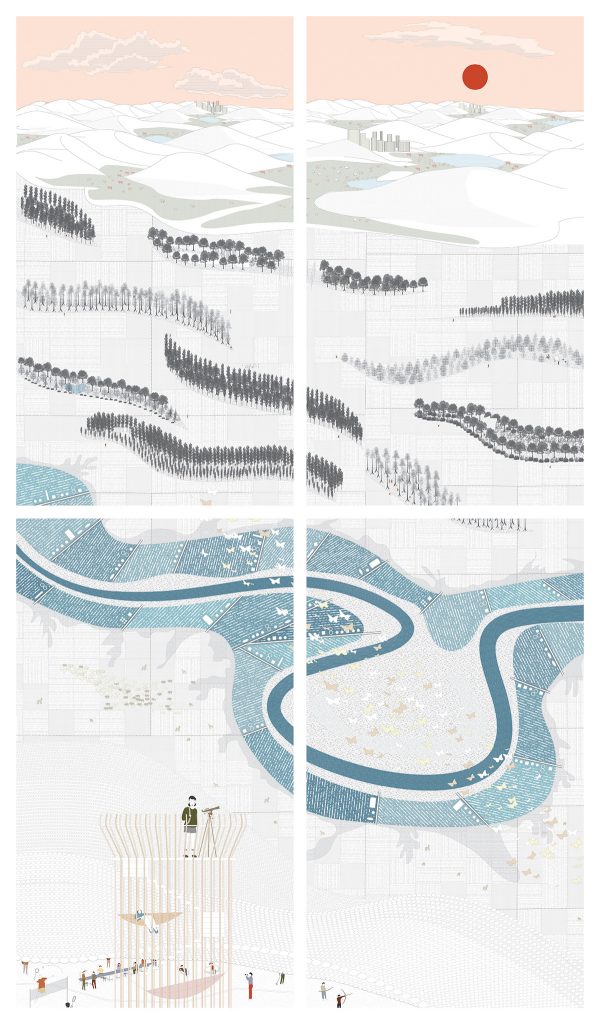
Architects can extend their reach by selectively loosening their grasp—understanding architectural production less as a one-way imposition of will onto and more as a two-way co-production with the many subjects of architecture. In this sense, architects might learn to operate less like a solitary author and more like a jazz musician—improvising freely off will and agency beyond one’s own. This project—neither interested in a simplistic retreat to autonomy and mastery nor a timid erasure and subordination of the will of the architect—instead asks how architects might resituate the act of ordering.
The design portion of the thesis explores this position by adopting the conceptual figure of the Grid as its subject. As perhaps the foremost avatar of architecture’s understandings of control and order, the Grid allows the project to operate simultaneously in both literal and metaphorical space. Taking the form of four speculative narratives, the project asks what New Grids—new ways of reconciling order and agency—a co-production approach might itself come to produce. Geographically, the project situates itself in perhaps the foremost example of socio-spatial ordering and grid-making in history—the Jefferson Grid of the United States—specifically sited in the rapidly-transforming, climatically-threatened agricultural landscapes of the Great Plains.
Ultimately, we argue, architectural order can be reoriented to the forces that act both on and in it—the many agencies, human and nonhuman, from which it is assembled. In this way, architecture can learn to tap into a surprising generative potential—both extending its reach and lightening its touch.
